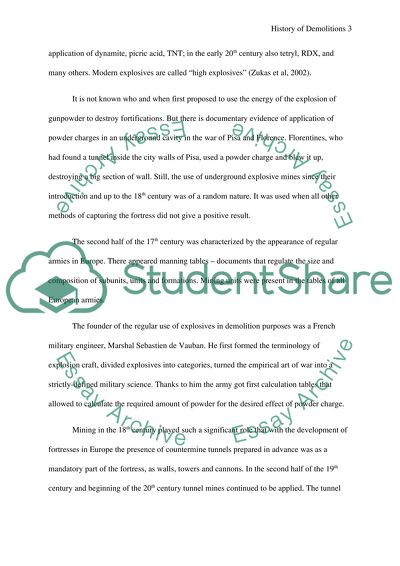History of Military Demolitions Essay Example | Topics and Well Written Essays - 750 words. Retrieved from https://studentshare.org/military/1431227-history-of-military-demolitions
History of Military Demolitions Essay Example | Topics and Well Written Essays - 750 Words. https://studentshare.org/military/1431227-history-of-military-demolitions.


